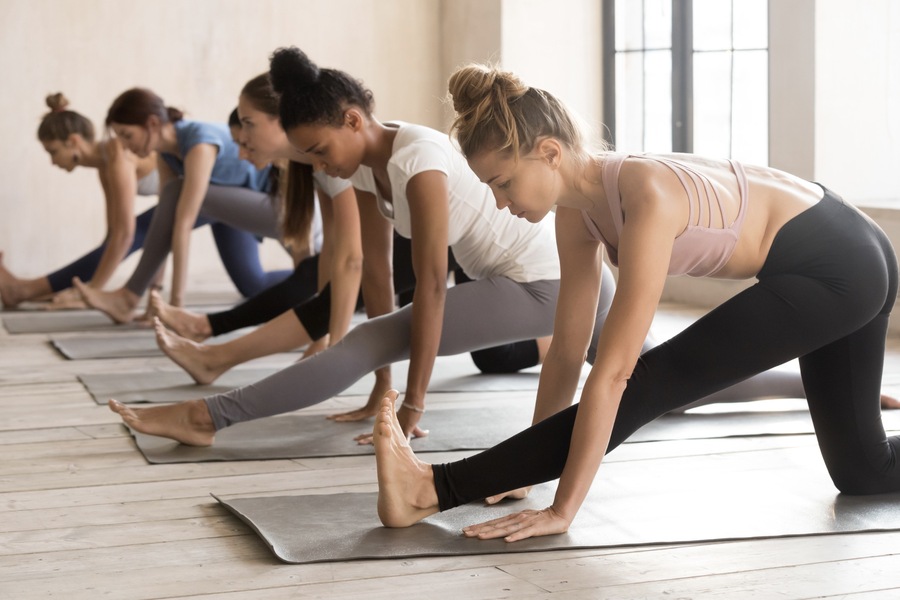In today’s digital age, a significant portion of the workforce spends hours seated at desks, often in less-than-ideal postures. This sedentary lifestyle can lead to various musculoskeletal issues, particularly affecting posture and balance. Gymnastics, often perceived as a sport for the young and agile, offers valuable exercises and techniques that can counteract these negative effects. For office workers, integrating gymnastics principles into daily routines can be transformative, fostering better posture, improved balance, and overall physical well-being.
The Impact of Sedentary Work on Posture and Balance
Long hours of sitting, especially with improper ergonomics, contribute to poor posture and compromised balance. Office workers often experience rounded shoulders, a forward-tilting head, and a weakened core, all of which can lead to chronic pain and discomfort. According to the World Health Organization (WHO), physical inactivity is one of the leading risk factors for global mortality, with sedentary behavior contributing to 3.2 million deaths annually. The combination of reduced physical activity and prolonged sitting exacerbates postural imbalances, leading to a cascade of health issues.
How Gymnastics Addresses Postural Imbalances
Gymnastics focuses on developing core strength, flexibility, and body awareness—three crucial elements for maintaining proper posture. The sport’s emphasis on controlled movements and alignment helps correct the muscular imbalances that arise from prolonged sitting. Core exercises, which are integral to gymnastics, strengthen the muscles that support the spine, reducing the likelihood of slouching and hunching. Flexibility routines, such as stretches and dynamic movements, counteract the tightness in the hip flexors and hamstrings, which often result from extended periods of sitting.
Moreover, gymnastics training encourages proprioception, or the body’s ability to sense its position in space. Enhanced proprioception is key to maintaining balance and stability, especially in static postures or while performing dynamic movements. For office workers, this translates to a greater awareness of their body alignment throughout the day, whether seated or standing.
Specific Gymnastics Exercises for Office Workers
Incorporating specific gymnastics exercises into a daily routine can yield significant benefits for posture and balance. Below are some targeted exercises that can be easily adapted for office workers:
- Planks: Planks are a fundamental gymnastics exercise that strengthens the core, shoulders, and back. A strong core is essential for supporting the spine and maintaining an upright posture. Holding a plank for 30-60 seconds, with proper alignment, can significantly improve core stability.
- Cat-Cow Stretch: This dynamic stretch, often used in gymnastics warm-ups, helps to mobilize the spine and relieve tension in the lower back. The movement between arcing and rounding the back also enhances flexibility in the spinal muscles, promoting better posture.
- Shoulder Bridges: Shoulder bridges target the glutes and lower back muscles, which are often weakened by prolonged sitting. Strengthening these muscles helps to maintain a neutral spine, reducing the risk of lower back pain and postural deviations.
- Wall Angels: Wall angels are an effective exercise for correcting rounded shoulders. By standing with the back against a wall and moving the arms in a controlled manner, this exercise strengthens the upper back muscles and encourages better shoulder alignment.
- Leg Raises: Leg raises are beneficial for strengthening the hip flexors and lower abdominal muscles. These muscles play a critical role in stabilizing the pelvis and maintaining balance during both static and dynamic activities.
The Role of Balance in Overall Health
Balance is often overlooked in discussions about physical fitness, yet it is a fundamental aspect of overall health, particularly for office workers. A lack of balance can lead to falls and injuries, especially as one ages. Gymnastics, with its emphasis on dynamic movements and stability, offers numerous exercises that improve balance. For example, standing on one leg while performing arm movements challenges the body’s ability to maintain equilibrium, engaging both the core and lower body muscles.
Balance exercises also improve coordination between different muscle groups, enhancing functional fitness. For office workers, this translates to improved movement efficiency, whether navigating stairs, lifting objects, or simply walking. Enhanced balance also reduces the likelihood of strain and injury, particularly in the lower back and legs.
Integrating Gymnastics into a Busy Workday
One of the challenges office workers face is finding time to incorporate physical activity into their daily routine. However, gymnastics exercises can be easily integrated into short breaks throughout the day. For example, a series of stretches can be performed at the desk, while more dynamic exercises like planks or leg raises can be done during a lunch break or after work. The key is consistency and making these exercises a regular part of the daily routine.
For those in Dubai and the UAE region, where the work culture often involves long hours in corporate environments, attending gymnastics classes specifically designed for adults can be highly beneficial. These classes offer structured programs that focus on core strength, flexibility, and balance, all of which are essential for counteracting the effects of prolonged sitting. Many gyms and wellness centers in Dubai offer such classes, providing office workers with an opportunity to improve their physical health in a supportive environment.
The Long-Term Benefits of Gymnastics for Office Workers
The long-term benefits of incorporating gymnastics into an office worker’s routine extend beyond improved posture and balance. Regular participation in gymnastics exercises can lead to increased overall physical fitness, reduced stress levels, and a lower risk of developing chronic conditions such as obesity, cardiovascular disease, and diabetes. Furthermore, the mental discipline required in gymnastics, such as focusing on form and controlling movements, can translate to better concentration and productivity in the workplace.
Gymnastics also promotes a greater awareness of the body, leading to more mindful movements throughout the day. This heightened awareness can prevent the adoption of poor postures, reducing the risk of musculoskeletal issues over time. As workers age, maintaining a strong core and good balance becomes increasingly important for preventing falls and maintaining independence. Gymnastics provides the tools to achieve these goals, making it an invaluable practice for office workers of all ages.
Conclusion
Incorporating gymnastics into the daily routine of office workers is a practical and effective strategy for improving posture and balance. By focusing on core strength, flexibility, and proprioception, gymnastics addresses the root causes of postural imbalances and provides the tools needed to maintain good posture and balance throughout the day. For those in Dubai and the UAE, where sedentary work is common, gymnastics offers a proactive approach to maintaining physical health in a fast-paced work environment. By committing to regular gymnastics exercises, office workers can not only enhance their physical well-being but also improve their overall quality of life.
Skydiver, feminist, band member, Mad Men fan and holistic designer. Acting at the crossroads of modernism and intellectual purity to craft delightful brand experiences. Let’s design a world that’s thoughtful, considered and aesthetically pleasing.


